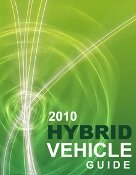Problems With Future Plug-In Hybrids
 Ah, the plug-in hybrid! It has been long-heralded as the answer to the oil problem and the release of some of the first models has been hotly anticipated by serious hybrid enthusiasts.
Ah, the plug-in hybrid! It has been long-heralded as the answer to the oil problem and the release of some of the first models has been hotly anticipated by serious hybrid enthusiasts.
So, what exactly is the difference between the hybrids currently on the road and plug-in hybrids?
Basically, the hybrids on the road today use their electric power when they can, and use gas as the primary fuel source. The fuel efficiency when compared to a standard vehicle is still amazing, but when the hybrid becomes a plug-in hybrid, the reported fuel economy shoots sky high. Plug-ins use electric power first and then fuel. The batteries are built to hold more electric power and so can use electricity for more powerful work.
What are the potential problems?
In the next few years, an abundance of plug-in hybrids (PHEVs) will be hitting the showrooms and the roads of America. Almost every major automaker is getting in on the game because they anticipate that PHEVs will begin to account for an increasing percentage of sales in the coming years. The short-list of who’s bringing a plug-in to the table:
- General Motors (the Volt)
- Chrysler has three in the works
- Nissan (EV-02)
- Mitsubishi (iMiev)
- Tesla (Roadster)
- Toyota (Plug-in Prius)
- Ford (Plug-In Hybrid Ford Escape)
Like any new technology, early adopters of the plug-in hybrids will probably experience a few kinks in the performance of their cars. However, if the early adopters don’t buy the new plug-ins and help generate a mainstream demand as they did with current hybrids, the whole technology could disappear from showroom floors as auto manufacturers see that no one is buying.
The potential problems those early buyers may face fall into three main categories:
- Cost. Current lithium-ion batteries don’t respond well to large swings in charging cycles. The plug-in hybrid concept depends on a battery that can handle large swings well. Large lithium-ions can handle them better, but often, the huge size can be prohibitive to keeping the design of the car small and light. Lithium-ion batteries are very expensive so if the original battery is not built to withstand large charge cycle swings, battery replacement may have to occur more frequently than with other types of cars.
- Life-span. This excerpt from Popular Mechanics best explains this potential pit-fall:
The current Prius, which uses nickel-metal-hydride batteries, has a 10-year warranty on the battery pack, but Toyota’s Reinert admitted that such a guarantee would be very difficult to offer on the electrified version. “If the warranty is only three years, are customers going to accept that?” he asked. Unless battery life can be improved, plug-in cars might succeed in reducing fuel cost per mile, only to transfer the burden of capital costs of imported batteries to the owner. - Available Technology. As more and more PHEVs hit the road, more and more people will need to charge them at home or at work. This could overwhelm an electric grid if it is not properly prepared,
It seems to me that PHEVs are indeed the wave of the future, but I suspect we might all be better off if automakers spent the next few years perfecting their design and campaigning for a solid infrastructure. That would improve the odds for success of these cars when they do start selling. What do you think?




















Comment by Renee Chevalier on 7 November 2008:
I have been working on my own Hybrid car and to date have been very successful with a plug in car. This car also uses a 2000 honda generator as a source for power. Seeing as electric motor and battery is the main source of movement for this vehicle the cost to run it is the cost to put fuel in the Honda generator. That cost works out to be about 1 gallon of fuel for every 300 miles or so.
Why so little? the generator runs constantly at a constant speed while running the vehicle. The Battery’s are charged by it and the charge under cruising speeds on the highway only account for part of the consumption. So the battery’s are in a positive charge mode while cruising only under extreme conditions like taking off quickly from a dead stop or racing someone off the line do those battery’s start to discharge and use the power from the generator and battery’s
Down sizing the car lightening it up is the only way we as people will survive the coming warming of the planet.
So we have to consider different choices for automobiles and transportation. First will come the light weight all electric generator assisted car. Next will come the Hydrogen electric car with hydrogen made from photoelectric cells. Then will come other forms of cars possibly closed nuclear powered systems. But they are coming we just have to speed it up for both the economy and the environment.